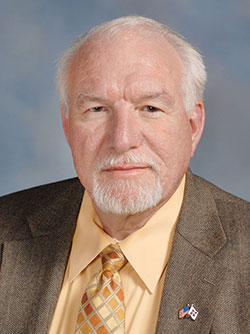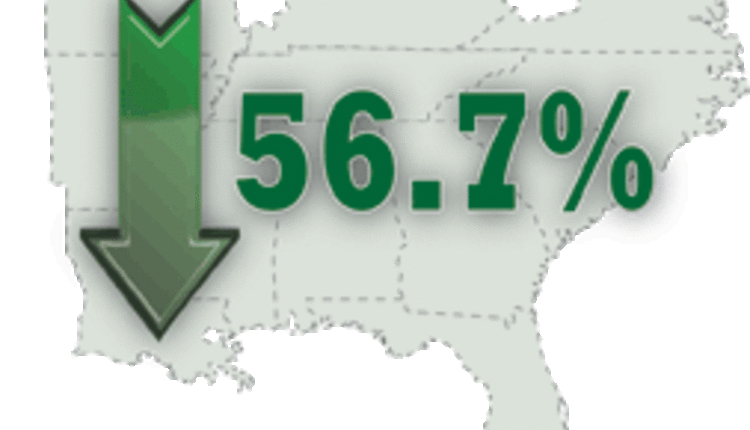
If this price forecast holds true, then 2020 will see the highest average milk price recorded since 2014. Of course, that year had a record-high All-Milk price of $23.98. If these $20-plus per cwt. milk prices are to be realized this year, milk production needs to be restrained and domestic dairy product demand must remain strong.
A topic resurfaces
After four years of depressed prices, dairy producers began seeking ways to improve their farm incomes. That brought Federal Milk Marketing Order (FMMO) reform to the forefront. The general consensus is that FMMOs are much too complicated, with the joke being that there are only two people in the world who understand how federal orders work and these people never should get on an airplane together. Everyone laughs but then realizes there is a lot of truth to this jest.
How to accomplish this reform is the $64,000 question, and there are significant differences in the specifications of the 11 federal orders. Personal interaction with dairy farmers across the country found that many knowledgeable industry leaders were surprised to learn about several of these features. This article will focus on two provisions unique to FMMOs located in the Southeast.
Skim-Fat versus MCP
There are two fundamentally different milk pricing procedures employed under FMMOs to calculate the price received by producers for their milk. Skim-Fat pricing is used in only four of the current 11 federal orders, and three of these are located in the Southeast (the Appalachian, Florida, and Southeast orders). Skim-Fat pricing requires handlers to pay for pounds of butterfat and skim milk across all four milk classes. Then, producers are paid the weighted average of the pounds of butterfat and skim milk used across all four classes of milk.
Conversely, Multiple Component Pricing (MCP) stipulates that handlers pay for: (1) pounds of butterfat across all four classes; (2) pounds of skim milk used in Class I; (3) pounds of nonfat solids used in processing Class II products; (4) pounds of protein and other solids devoted to Class III products; and (5) pounds of nonfat solids allocated for Class IV use.
Subsequently, the MCP scheme pays dairy farmers for the pounds of butterfat, protein, other solids, and any residual value. Skim-Fat pricing has no mechanism to pay for any milk components except butterfat.
In general, the Skim-Fat pricing method appears better-suited for federal orders where most of the milk produced is used in Class I. On the other hand, MPC provides price incentives to producers for marketing milk with higher components which improve yields of manufactured dairy products. The three Southeastern FMMOs continue to be dominated by Class I where at least 70% of milk pooled on these orders are allotted to fluid milk products.
However, there is a groundswell of farmers, especially those who generate higher component milk, who suspect they may be leaving money on the table under the Skim-Fat procedure. To investigate this possibility, order administrators conducted an analysis of the change in the value of Class II, III, and IV skim/solids components pooled under the Appalachian and Southeast orders from January 2008 to December 2017.
This study found MCP would have added almost $83 million in revenue generated from milk pooled over this 10-year period, or MCP could have added more than 10 cents per cwt. to dairy farmers’ incomes. Naturally, prospects of enhancing milk prices are quite attractive and there are other benefits attributed to MCP, but the overall goal is to provide better price signals to farmers.
Transportation credits
The U.S. dairy industry struggles to manage the escalating costs of moving milk along the supply chain. This troubling problem describes the growing geographic separation between large population centers and major milk production areas.
The physical detachment between milk producers and dairy consumers has steadily grown over the past several decades, and these expanding distances have and are causing strains on milk processing firms, handlers, and dairy marketing cooperatives charged with the responsibilities of “balancing milk supplies.” This growing problem is currently more pronounced in Southeastern states than elsewhere in the U.S.
To address these higher shipping costs, public hearings were held in 1996 and followed by affirmative votes by dairy farmers which established the Transportation Credit Balancing Fund (TCBF) for the Appalachian (federal order or FO No. 5) and Southeast (FO No. 7) orders. Federal order provisions specify the maximum assessment of 15 cents per hundredweight for FO No. 5 and 30 cents per hundredweight for FO No. 7.
Different assessment rates were based on distances that supplemental milk needed to travel to meet Class I demands. They were shorter for the Appalachian order than the Southeast. Currently, both the Appalachian and Southeast orders collect the maximum assessment rates of 15 cents and 30 cents per hundredweight, respectively.
These assessments are paid monthly by dairy processors and handlers regulated under the Appalachian and Southeast orders. The amount paid into the TCBF is calculated on the amounts of bulk milk classified as Class I milk only.
For the 10-year period from 2009 to 2018, annual assessments averaged almost $6 million for the Appalachian order and $12.5 million for the Southeast order, for a total in excess of $18.5 million. TCBF payments are made to cooperatives and handlers who import supplemental milk which is delivered to a fully regulated milk plant.
TCBF payments are made for both the Appalachian and Southeast orders during the months of January, February, and July through December. Payments are not made in the months of March, April, May, and June when adequate milk supplies have usually been available from local (in order) producers.
If there are not sufficient collections in the TCBF to pay for all eligible claims for reimbursement in any month, then the payments are allocated on a pro rata basis. Market administrators report the average pro rata was 75% for 2009 to 2018, meaning that TCBF was able to pay for about three-quarters of the claims during this time span.
There has been substantial momentum toward FMMO reform to address concerns with orders. But with better milk prices expected for 2020, the question becomes . . . Will this impetus for reform be derailed by improving dairy farm incomes?







